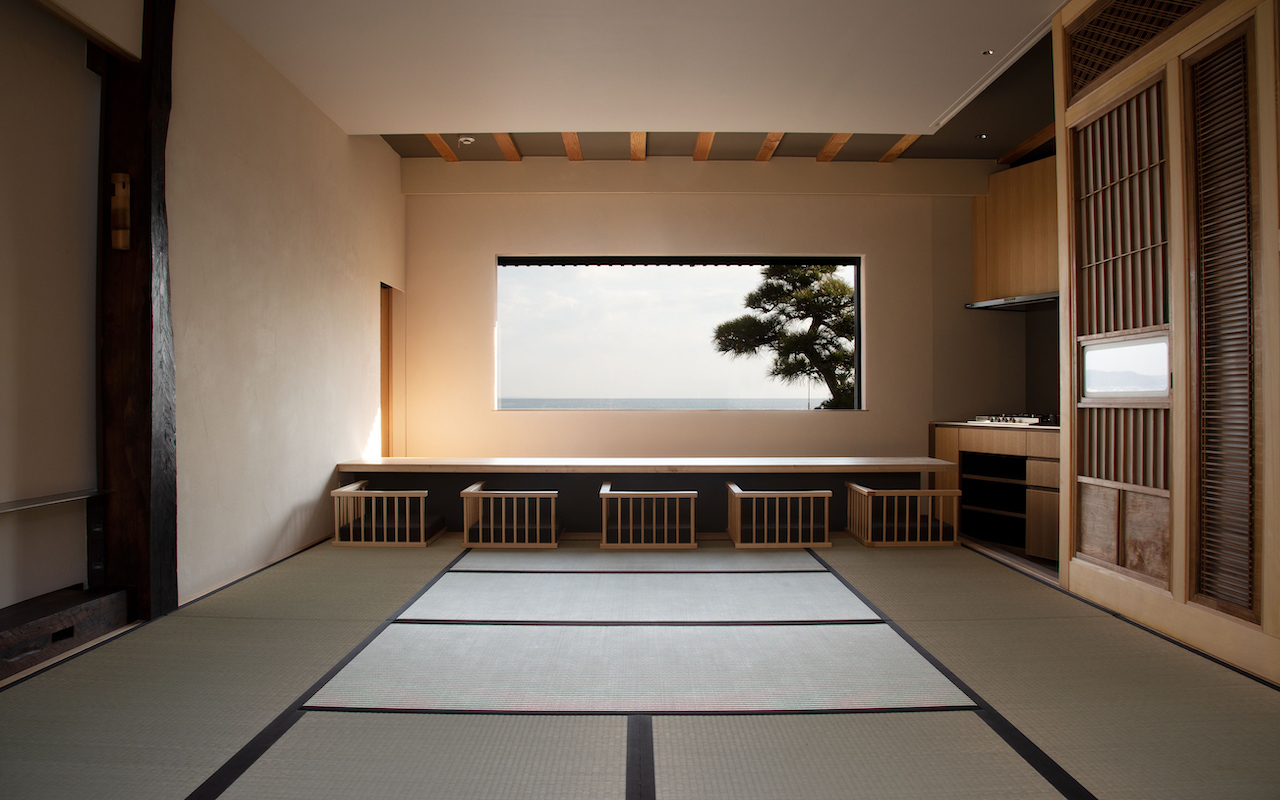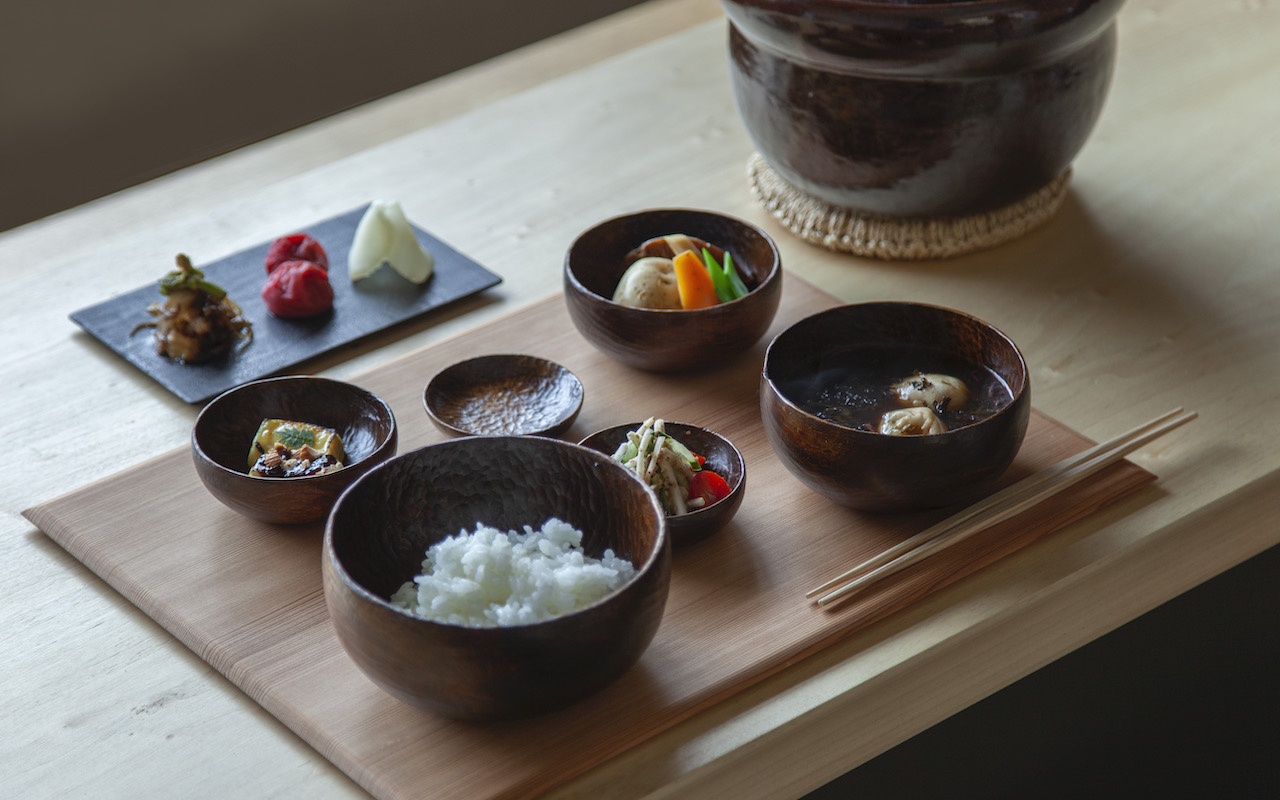
1. Surrounded by nature
Bordered on one side by the sea, and on the other by the magnificent Kamakura hills, the wooden villa’s windows frame spectacular views of the sea and the garden, while its sliding doors open onto peaceful verandas. “The idea is to have fewer borders between nature, garden and house,” says Nobuyuki Kishi, the ryokan’s co-owner. The ocean spray almost reaches your window as the waves crash against the beach – a painting come to life. The house borrows the concept of watarirōka (“crossing corridors”) from Buddhist temples, using open-air walkways to provide a variety of views.
2. Rooted in Zen
Co-owner Nobuyuki happens to be the 16th head of a samurai family, and shares that the ryokan, an hour south from Tokyo, is based on the Zen principle of chisoku, a Buddhist term meaning “to know the feeling of being fulfilled with the now”. The Kishi family are acolytes of the Rinzai sect of Zen Buddhism, and from the setting close to the holy city of Kamakura to the ryokan’s deliberate architecture, food and amenities, a stay here offers a window into the vast landscape of traditional Japanese culture and values.

3. Modern minimalism
The ryokan’s simple, clean lines are informed by the design aesthetic of fellow co-owner – and Nobuyuki’s spouse – Hitomi Kishi, who studied product design at Tama Art University, in cooperation with Ryohei Tanaka, who worked under leading Japanese architect Kengo Kuma before starting his own firm. Panels slide to reveal closets and hidden compartments, creating adaptable rooms with open spaces. Pieces from traditional farmhouses, like beams cured from years of woodsmoke, as well as elements from Nobuyuki’s own ancestral home, are integrated into the building, providing a structure that feels both new and traditional all at once. Furniture made from reclaimed wood like sakura, quince and horse chestnut further brings nature indoors, while their round cypress bathtub makes for a deep, relaxing soak.

4. Traditional breakfast
Shojin ryori is a type of Buddhist vegetarian cuisine that features simply prepared seasonal produce. Hitomi serves the dishes in a set of graduated stacking bowls inspired by Zen jihatsu (nested bowl) dishes, custom-made for them by ceramicists from Tochigi Prefecture. Tea pairings help to balance each morsel: a delicate and fragrant bancha (a seasonal Japanese green tea) accompanies a light but flavourful vegetable and tofu soup, while a sour goishicha (fermented tea) complements steamed vegetables atop new-crop rice.

5. Tea ceremony
Tea is in fact an integral part of kishi-ke, from the welcome pot brewed upon check-in to the formal tea ceremony in the tatami room conducted with graceful, intricate movements. Guests can try preparing matcha themselves – the Kishis will instruct you not only on the preparation steps, but the meaning behind each flick of the wrist. Tea requires a pause in the day, and so the experience is a perfect study in mindfulness.
Singapore Airlines flies to Tokyo six times a week. To book a flight, visit singaporeair.com
SEE ALSO: Review: Shishi-Iwa House, Karuizawa
This article was originally published in the December 2019 issue of SilverKris magazine
The post Review: kishi-ke, Kamakura appeared first on SilverKris.
from SilverKris
No comments:
Post a Comment